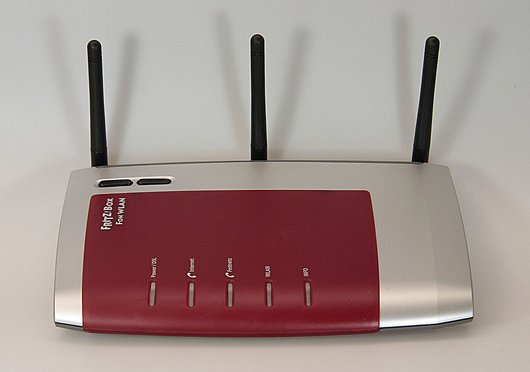Find out
There are different types of Internet connections offered by the so called Internet service providers (ISP). Depending on the user’s needs – how often, for what purposes – and his/her economic possibilities, he/she can choose between dial-up (modem, ISDN) and broadband (cable, DSL) connections.
Dial-up connections
These connections are made through a modem, a computer device that uses a telephone line to connect to the Internet. There are two types of dial-up connections: - modem and - ISDN.
Analog modem
The modem dial-up connection requires an analog modem and a common analog telephone line.
- Advantages: a modem connection can be easily set up everywhere where a telephone line is available and where still no broadband access is possible. There are Internet-by-call providers, so you do not necessarily need a contract with an ISP. The charges for your Internet use simply appear on your phone bill, but be aware not to dial the wrong number (cf. dialers).
- Disadvantages: Every time the user wants to connect to the Internet, the modem must dial via the telephone; so the telephone line ties up, and users may need a second line; it is a relatively slow connection because the modem has to convert the digital signals of the computer into analogue signals for the modem to send them over the telephone line, so to completely load a standard webpage can take quite some time.
ISDN
Integrated Services Digital Network is a high-speed dial-up connection that uses a digital telephone line.
- Advantages: ISDN is faster than analog modem connections because signals transmitted are already in digital form; with ISDN the simultaneous use of phone, fax, Internet is possible; it is also possible to attach up to 8 devices such as phones, faxes, etc. at the same time.
- Disadvantages: As the volume of data sent over the Internet continuously increases (e.g. standard web pages get bigger and bigger in size) it takes quite some time to download data using the ISDN connection. That is why increasingly these days ISDN connections are often used in combination with broadband connections.
Broadband connections
High-speed connections that function with a wire that can carry several channels or communication paths at once – such as phone, television signals and Internet data. There are two types of broadband connections: cable broadband connection and DSL broadband connection.
Cable broadband
The cable broadband connection is a fast connection for which you need a cable modem and a network card that must be installed in your computer.
- Advantages:
a) one of the faster types of Internet connection;
b) no dial-up needed, because if the computer is on the connection is also on;
c) telephone line is not tied up when surfing in the Internet;
d) cable companies offer different packages according to the user’s needs and with fixed monthly fees. - Disadvantages:
a) Users in a neighborhood share the available bandwidth provided by a single cable line. Therefore, connection speed can vary depending on how many people are using the service at the same time, although in most areas, this has been eliminated by further technical development;
b) many cable Internet providers are reluctant to offer cable modem access without tying it to a cable television subscription;
c) this type of connection is not available everywhere.
DSL
DSL (digital subscriber line): broadband connection using the wires of a local telephone network.
- Advantages:
a) fast, sometimes as fast as cable connections;
b) allows transmitting voice and data at the same time over the same line;
c) since it functions for voice communications as well it saves the cost of a second line;
d) flat-rates available. - Disadvantages:
a) not available everywhere;
b) often long-term contracts.
Why is this information important for translators and translation teachers?
Since the Internet is one of the tools most often used by translators, they should be aware of the different types of Internet connections available on the market. This helps them to choose a connection according to their needs (online time, up-/download volume and speed).



